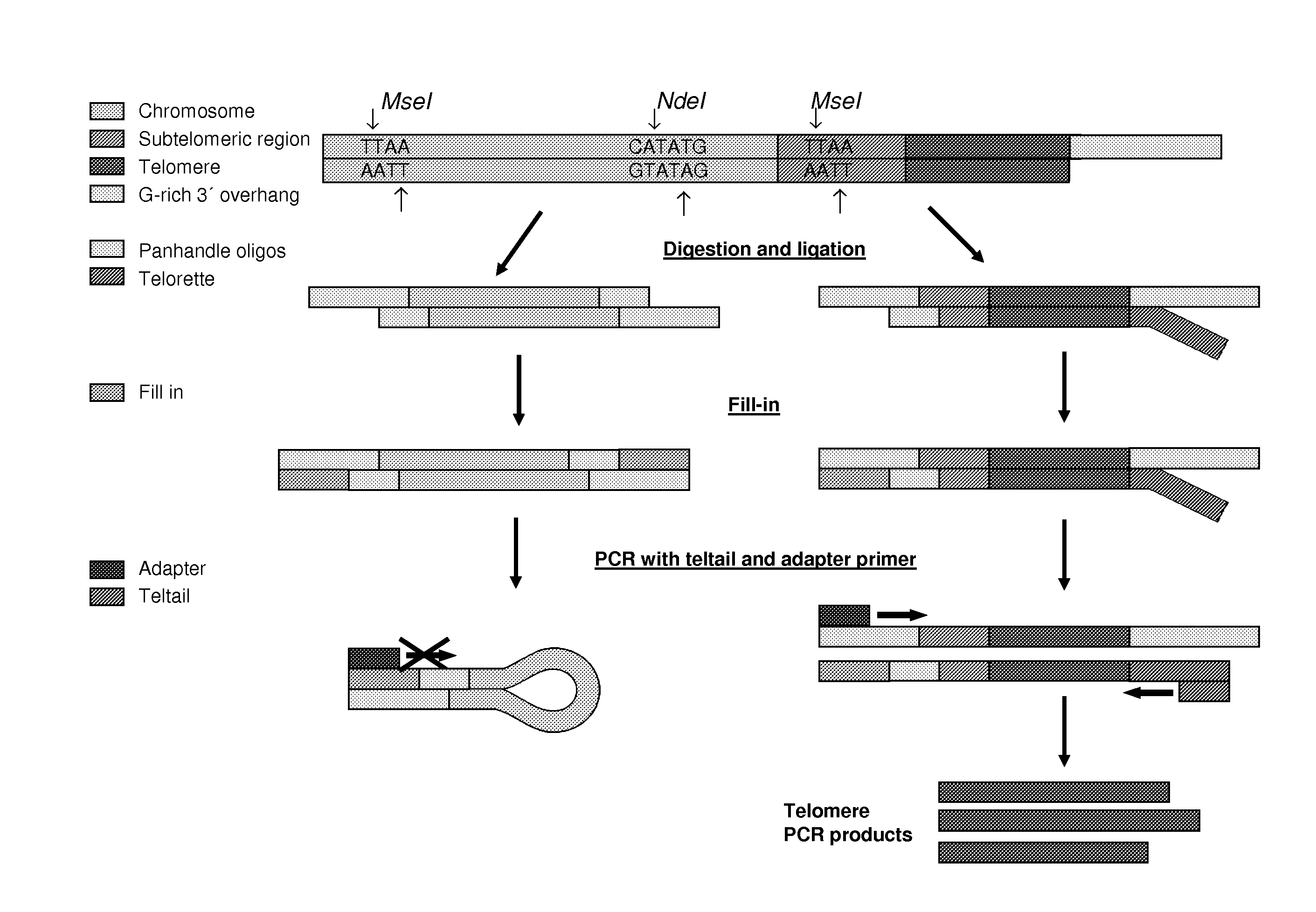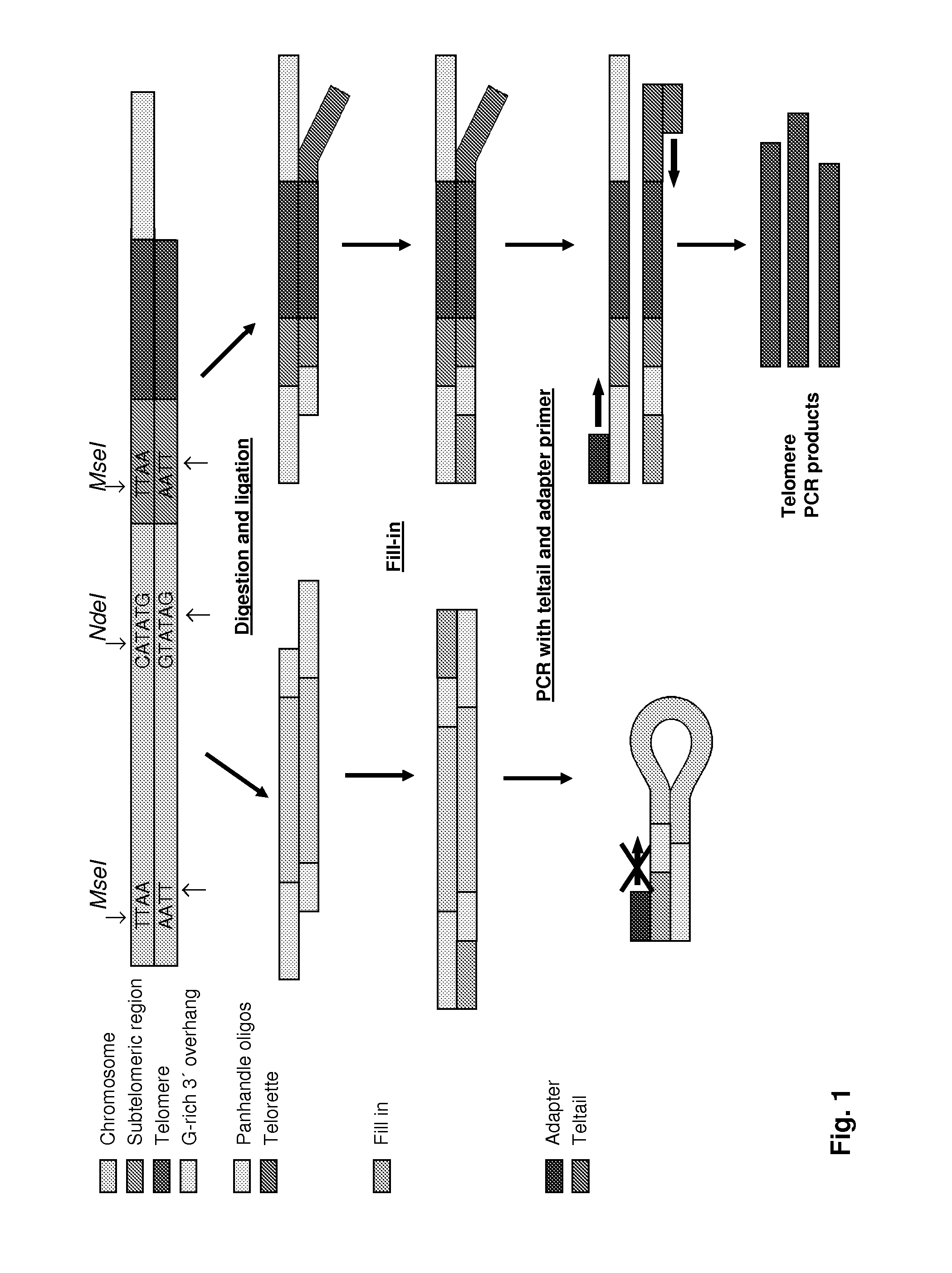Method for Estimating Telomere Length
a telomere and length technology, applied in the field of telomere research, can solve the problems of okazaki fragment formation, cell may even go into apoptosis, and unfold from their presumed closed structure, and achieve the effect of minimizing the handling and loss of dna
- Summary
- Abstract
- Description
- Claims
- Application Information
AI Technical Summary
Benefits of technology
Problems solved by technology
Method used
Image
Examples
example
[0245]The following examples are to illustrate the method according to the invention and are not to be interpreted as limiting for the invention.
Overview of Assay Principles
[0246]Extracted DNA from as little as 250 cells is digested with a mix of the restriction enzymes here MseI and NdeI, which produce two-base sticky overhangs and are frequent cutters presumably also cutting the subtelomeric region (see FIG. 1). The digestion leaves behind mainly pieces of genomic DNA of 10-3000 bp all with the same sticky overhang 5″-AT-3′ in each end. However for every chromosome end a fragment of DNA with the telomeric region including the 3′ overhang and a smaller part of the subtelomeric region with a 5″-AT-3′ overhang is also formed.
[0247]The next step is a ligation-based step, in which two specially designed oligonucleotides are ligated to the upstream overhang. These two oligonucleotides are designed so that they anneal forming a two-base sticky overhang complementary to the overhang forme...
PUM
| Property | Measurement | Unit |
|---|---|---|
| Tm | aaaaa | aaaaa |
| Tm | aaaaa | aaaaa |
| temperature | aaaaa | aaaaa |
Abstract
Description
Claims
Application Information
 Login to View More
Login to View More - R&D
- Intellectual Property
- Life Sciences
- Materials
- Tech Scout
- Unparalleled Data Quality
- Higher Quality Content
- 60% Fewer Hallucinations
Browse by: Latest US Patents, China's latest patents, Technical Efficacy Thesaurus, Application Domain, Technology Topic, Popular Technical Reports.
© 2025 PatSnap. All rights reserved.Legal|Privacy policy|Modern Slavery Act Transparency Statement|Sitemap|About US| Contact US: help@patsnap.com



